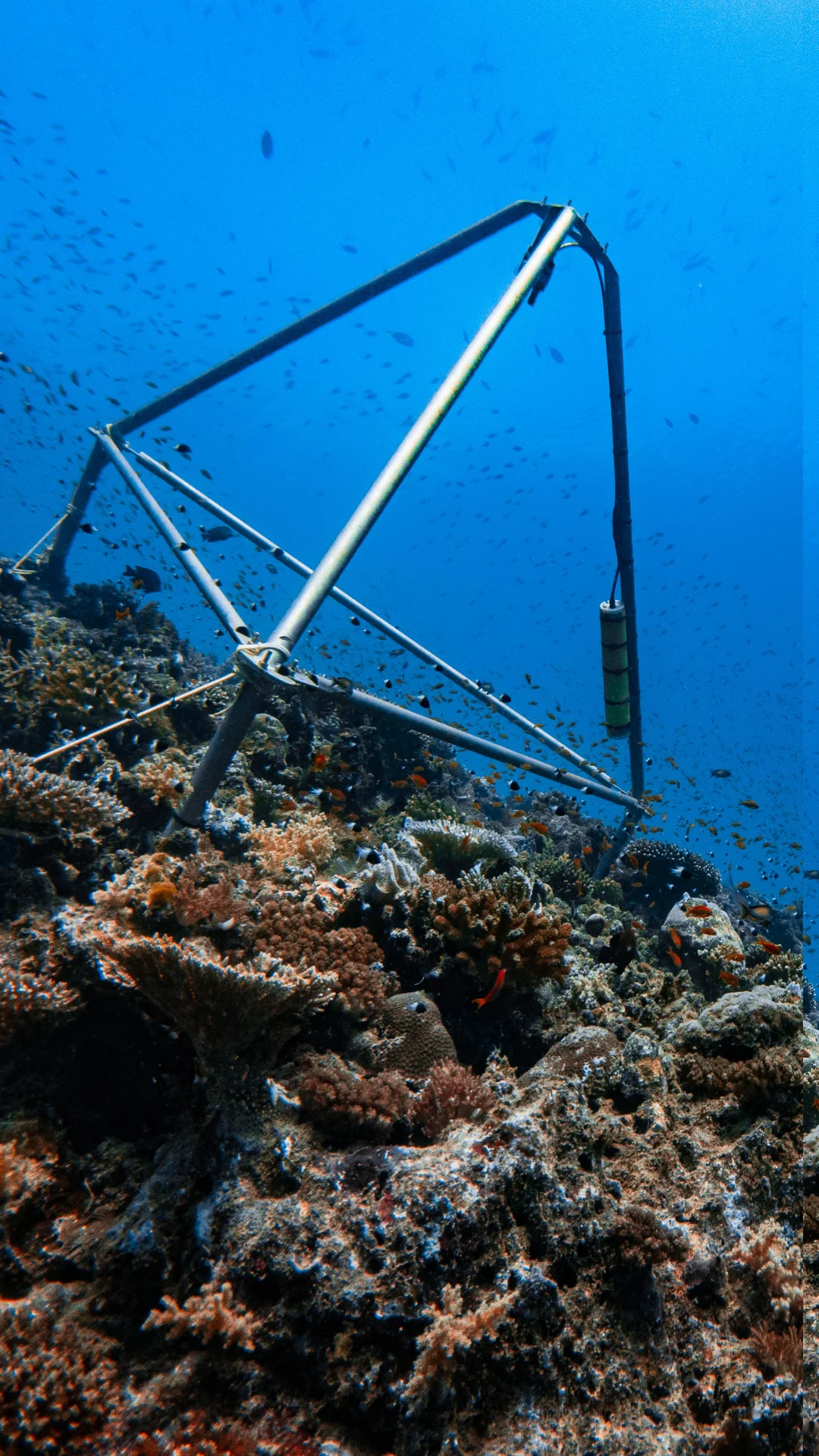What is Ecoacoustics?

Ecoacoustics is a discipline that studies all the sounds of a natural environment, also called soundscape.
While Bioacoustics focuses on the behavior of individuals of a species, Ecoacoustics studies all species and their interactions, proposing an innovative ecosystem approach based on soundscape recording. By analogy with music, Bioacoustics focuses on a particular instrument, while Ecoacoustics studies the orchestra.
CORAL REEF SOUNDSCAPES GATHER 3 TYPES OF SOUNDS:
Biophony
Voluntary (e.g., vocalisations, territory defense) or involuntary acoustic activities (e.g., movements, feeding, escape) of living organisms.
Anthropophony
Sounds generated by human activities (e.g., boat engines, divers, seismic explorations).
Geophony
Sounds generated by physical processes (e.g., waves, wind, rain).
What are the advantages over traditional monitoring methods?
-
While current monitoring methods are based on the snapshot assessment of a site at a given moment of the year, a passive acoustic recording device can monitor a site for six months without changing its battery. The power of learning algorithms allows for the efficient processing of such data. The information produced facilitates the understanding of the temporal dynamics of these ecosystems and their response mechanisms to disturbances. This information is currently not provided by any other method.
-
While data from visual methods are barely comparable at large scales, using calibrated recorders guarantees the collection of standardised data that can be compared among sites worldwide. Current conservation programs need this type of data.
-
Soundscape anthropisation disrupts many processes, such as recruiting fish and coral larvae, essential for community renewal. The extent and impacts of anthropogenic noise pollution (e.g., boat traffic, seismic exploration) are increasingly understood, and noise pollution is beginning to be subjected to environmental regulations. The ecoacoustic approach allows us to quantify these pollutions and the effects of the measures taken to moderate them.
-
Beyond the voluntary production of sounds by a large number of reef species, many processes intimately linked to reef functioning generate sound. The ecoacoustic approach provides a global functional assessment of the ecosystem by recording and analysing the soundscape.
-
Apart from the presence of divers to deploy or retrieve the device, ecosystem assessment is entirely passive. In addition to ensuring a more « accurate » assessment (i.e., free from the biases associated with the presence of divers), this approach allows the monitoring of species and communities that are usually difficult to observe (e.g., cryptic species, nocturnal species) without disturbing the ecosystem.
-
The recorded acoustic data constitute an « ecoacoustic time capsule », a high-fidelity witness of a reef's ecological state and functioning at a specific time. Archiving the raw data has multiple advantages: they can be analysed again (using newer tools, for example), or they can be used to set ecological restoration goals by seeking to re-establish the past acoustic characteristics of an ecosystem.
Why use artificial intelligence?
Continuously deployed, a hydrophone generates more than 500,000 minutes of data per year. To process this information, our teams of biologists and computer scientists develop algorithms that convert raw records into synthetic details on reef life.
